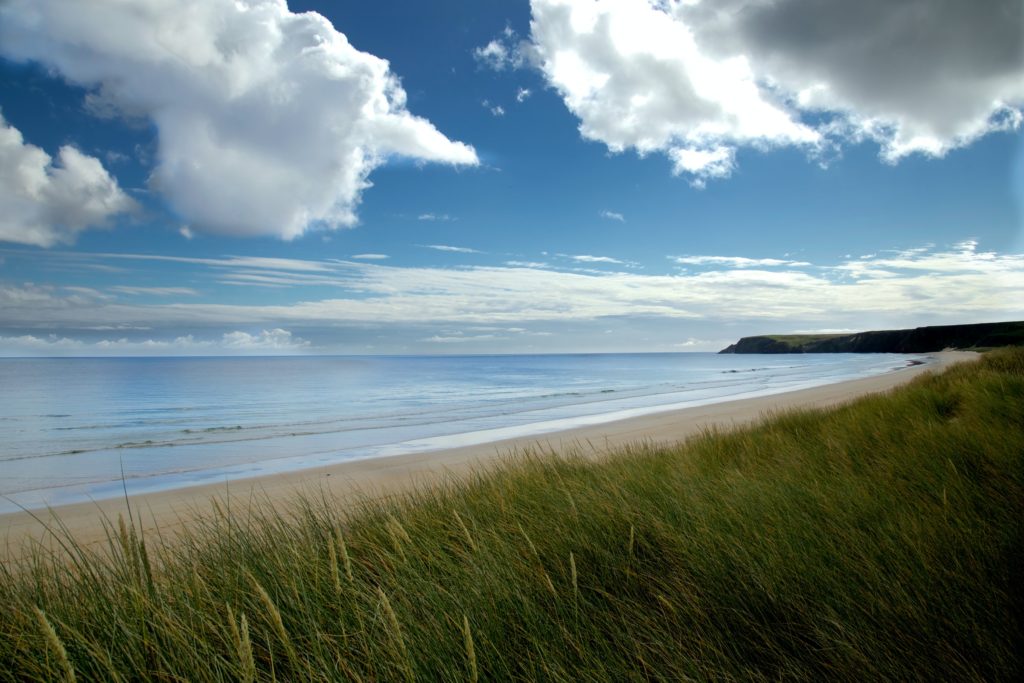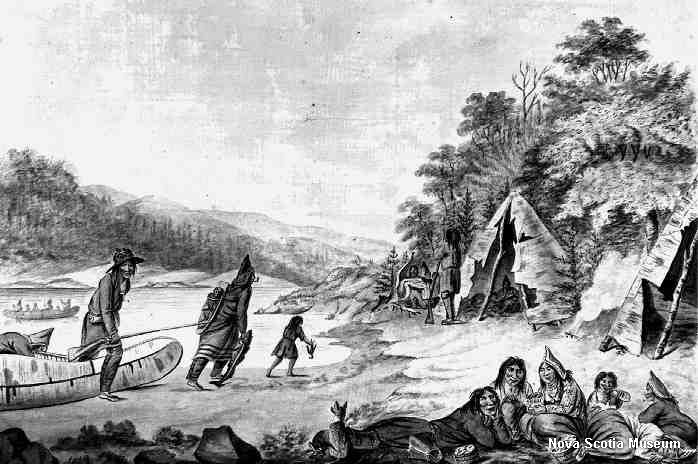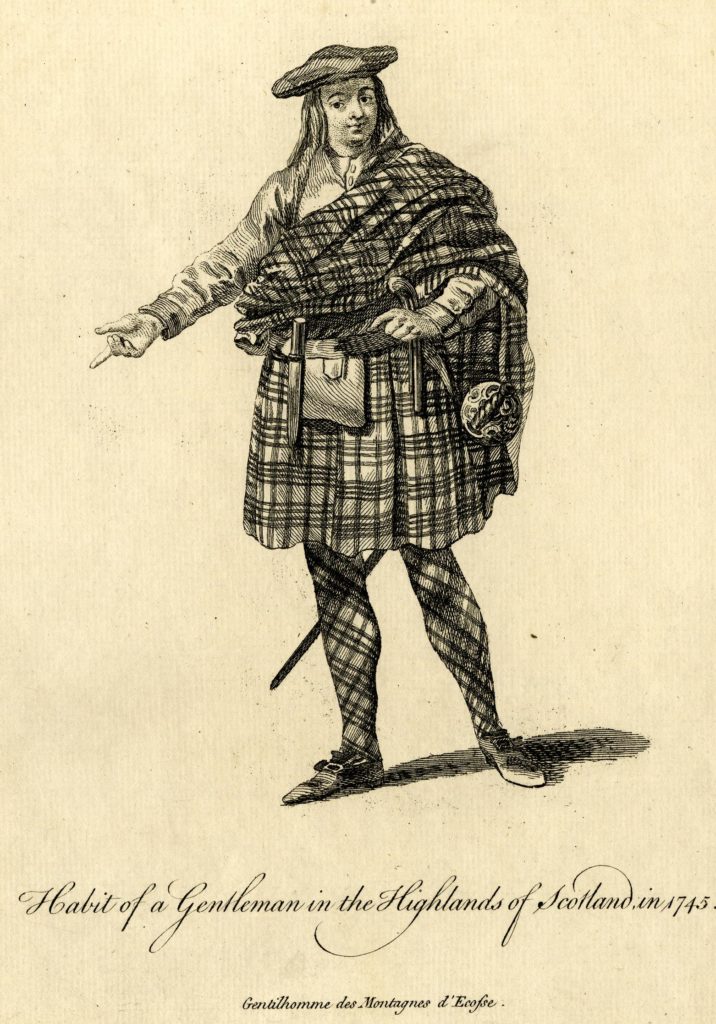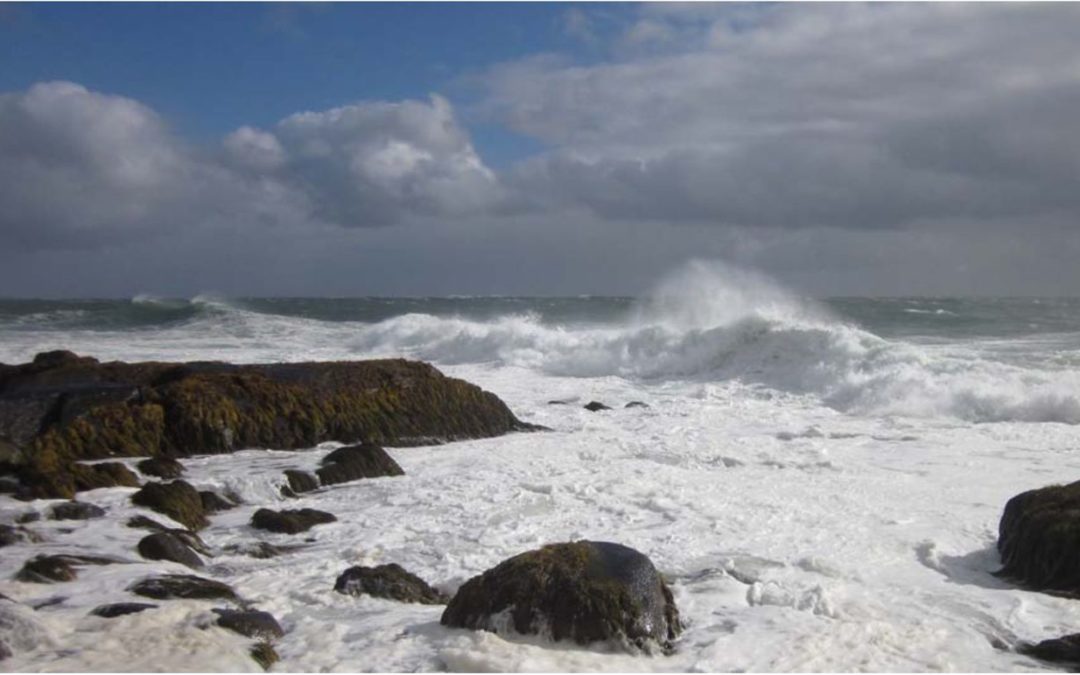By Sharla Chittick
Environment & History, essay no. 4
In this, the next in our series of posts on new histories of the environment, Dr Sharla Chittick discusses her comparative research on the Wabanaki and Hebridean peoples of the western and eastern Atlantic coasts, between the eras of deglaciation and colonial settlement.
Chittick’s work demonstrates the very different impacts of historical climate change, settlement, and commercial exploitation for these two communities and their environment, and draws lessons for the better management of the contemporary climate emergency. She begins her post by setting out her motivations and aims as an environmental historian.
The next essay in the ‘Environment & History’ series will be published Wednesday 24 February 2021 with ‘The history of a communication problem: conflict between Dutch nature conservation and agriculture’.
Environmental historians are uniquely positioned to address the greatest crisis of our age. We research and teach historical case studies that reflect the environmental impact of human values and behaviours. We explore environmental injustices, examine hierarchical economies, and reveal how human practices and perceptions have catapulted us into our current crisis. Environmental historians gather and possess evidence that can contribute to a global effort to stave off disaster. There is great opportunity for cooperation within and outside our specialties. We need to explore and recover historical lessons about sustainability, cooperation, and empathy—concepts that are currently being prioritized by scientists and academics in other disciplines.
Without a shift in human consciousness toward valuing sustainability, healthy human connections, and cooperation, we are headed toward a period of destabilization that will easily surpass that of the Covid-19 pandemic. To avoid mass human suffering, we require shifts in the relationship between humans of different ethnic backgrounds; between all humans and the environment; and humans and their current social and economic systems.
If we’ve learned anything from recent events, it’s that we are at a point of reckoning. Perhaps 2020 was 20/20 for a reason. It provided clear vision for many who were previously blind to our unstable infrastructure and created an opportunity for us to change collectively the trajectory of human history. Our pandemic experience is a cautionary tale. It’s obvious we need to respond better to the ecological and climate crisis than we are doing to Covid.
***
Writing in 1995, one of the fathers of environmental history, Alfred Crosby, described how:
‘The ideology of environmental historians is at its root biological. They doubt the ultimate sense of many of the choices that humanity has made, especially in the last few hundred years, in exploiting the earth. They are worried about the durability of the intricate organic and inorganic relationships that support us all.’
‘The past and present of environmental history,’ American Historical Review 100, (1995), 1189.
This is exactly why I made the environment my academic and professional focus: to research, write, and then teach lessons from the past that provide strategies for the future.
As a historian, relying on written sources was my comfort zone for a very long time. However, when I chose to research histories of the environment and climate for people who lacked an extensive written culture, I had to develop a multi-disciplinary methodology. At first, it was intimidating, but eventually it became the most rewarding and fully integrated work I’ve yet undertaken.
Exhausting written sources is only one method for determining how humans have negotiated changing climates. The earth holds its own historical record, so we can turn to science: sampling from ice cores, soil, coral, and vegetation provides an excellent scientific record of how the planet has changed over time. Yet utilizing oral histories and soft sciences is equally important, providing crucial evidence of beliefs, perceptions, and relationships that help us get closer to the motivations for past human behaviours.
By embracing the findings of scientists, integrating oral stories, and exploring psychological and sociological studies, I sought to create a complex and thorough historical picture. This was my puzzle and each piece represented findings from either inter-disciplinary or multi-disciplinary evidence. Environmental history, and especially climate history, demands this three-way approach.
***

Beach in the Outer Hebrides, Lewis, Scotland. Photo by Paolo Chiabrando.
For me, environmental history is also about justice. When racism and socio-economic oppression are present in a society, there are always unsustainable environmental practices and perceptions at work. To demonstrate this, I embarked on a comparative study. I chose two regions and peoples—the Wabanaki of Ketakamigwa, on the west Atlantic coast, and the Hebrideans of the Scottish Insular Gaeltacht, on the east. Both peoples negotiated natural environmental changes in a very similar way, but were eventually subjected to imperialism, colonialism, racism, and violations of social, economic, and environmental justice. My work examines both how these two historical communities reacted to climate change, and how racial inequality and indifference to sustainability have impacted the natural environment and undermined social cohesion.
There are lessons from the past that can serve as remedies for our present challenges. Climate historians have several millennia of case studies demonstrating human responses to natural climate change. We can see what worked and what did not work during these periods when the climate was changing slowly. What makes our contemporary experience so extraordinary, is that it is anthropogenic—climate change is now being caused by human activity. Humans are no longer reacting to natural cycles of change. Rather they have created a new dynamic cycle; one that cannot change until humans do.
For decades, we have warned about the devastating impacts of increasing CO2 and global temperatures, sea-level rise, and ocean acidification. We have warned about the acceleration of extreme weather events like unprecedented flooding, drought and fire. We have also warned that deforestation and human incursion into wild spaces diminish biodiversity, and create epidemics like Ebola and Swine Flu.
For these dire warnings, some have accused us of hyperbole. Yet here we are, facing an immediate and global threat from climate change: the zoonotic and novel coronavirus, Covid-19. The pandemic has exposed racial and social inequalities, ideologically polarizing our political discourse, and making climate histories and remedies not only relevant but a priority. We must examine the past for answers to contemporary problems because we simply have no place else to look.
As historians, we bear witness to the injustices of the past. Our responsibility has always been to reveal and interpret the evidence to our students and our readers. For the atrocities that have taken place over thousands of years, we can present lessons. For those atrocities that are still taking place today, we are valuable witnesses.
When students ask me why knowledge of history is so important, I tell them it’s because we have a multitude of case studies that help us understand human behaviour. Yes, our technology has evolved exponentially, but has human nature evolved? Not necessarily. By gathering and examining evidence of historical human behaviour we can see what went wrong. We can study the destructive attitudes and actions. We can then provide commentary on the belief systems of the present. In environmental history, we explore the past to improve the future.
***
To do this myself, I had a number of objectives. First, I wanted to offer a comparative study. Just as we find ourselves comparing contemporary pandemic policies and outcomes to determine which countries are best addressing the crisis, I felt that I could identify best practices more clearly through a regional comparison.
Second, l wanted the big picture. I sought to explore how environmental pressure evolved over the long durée – eleven millennia of the Holocene – from deglaciation to the eighteenth century. This helped me identify when and why our environmental threats and injustices surged.
Third, I sought to focus on the social, economic, and spiritual beliefs and values that shaped actions. I wanted to test the sustainability of these value systems. I seek to track when and why these changed; how these changes influenced human-nature and human-human relationships; what repercussions this had on the environment, and whether changing value systems were prompted by internal or external factors.
Fourth and finally, I was concerned with the repercussions of imperialism and colonialism on environmental and cultural sustainability. The period between the sixteenth and eighteenth centuries saw tremendous pressure on indigenous people around the world and was catastrophic for their environments. Yet some indigenous value systems did survive, and that resilience could provide us with contemporary models for best practices.
During the imperial and colonial period, indigenous people were ravaged by disease, forced off their ancestral lands, and subjected to all facets of oppression. It was important that I examine two of these peoples who shared these experiences, albeit with very different outcomes.
***

H. N. Binney, Watercolour of Mi’kmaq people (c.1791), Nova Scotia Museum, Halifax, NS, Canada: P113/ 79.146.1/ N-9410, N-8420. (Free use for non-commercial educational purposes only.)
On the western edge of the North Atlantic, I explored the indigenous people of the maritime provinces of Canada and the US state of Maine. A traditional name for this region is Ketakamigwa, and it was home, among others, to the Mi’kmaq, Maliseet, Passamaquoddy, and Penobscot tribes who created the ‘Wabanaki Confederacy’ in the seventeenth century.
On the Atlantic’s eastern edge were the people of the Scottish Western Highlands and Islands—the Hebrideans—who inhabited the traditional Scottish Insular Gaeltacht. Both regions experienced a similar cycle of climate change between deglaciation and the eighteenth century. Both peoples cultivated kin-based clan societies dependent on the sea. And both were eventually oppressed by imperial forces and exploited by cash economies.
For thousands of years, lifeways in these two regions were strikingly similar. As new people and ideas moved into the Scottish Insular Gaeltacht, reverence for sustainability and social equality was increasingly challenged. Between the sixteenth and eighteenth centuries, perceptual nuances became stark differences in their practices. By the eighteenth century, native people on both sides of the Atlantic were responding very differently to the weight of a value system based on racial inequality and mass resource extraction. And perhaps most compelling was that, during the Highland Clearances, those Scots were dispossessed of their ancestral homes and forcibly removed to the territory of Ketakamigwa. Meanwhile, the Wabanaki people in Ketakamigwa remained in their ancestral homes.
***
Using my multi-disciplinary methodology, I began tracing natural climate change from deglaciation to the sixteenth century. Scientific findings and oral stories demonstrated continuous habitation in both regions. There was a wealth of evidence for human resilience in adjusting their settlement locations, resource exploitation, and relationships to the natural world as the climate changed.
This was because their economic practices revolved around a real economy, one based on the exchange of available resources. For thousands of years following deglaciation, as the Atlantic warmed, the people in these two regions were pragmatic and incredibly ingenious when creating new technologies and lifeways to accommodate natural climate change. The ancestors of the Wabanaki and Hebrideans adapted to increases in sea level, changes in regional habitat and rising temperatures. They also cultivated spiritual practices that were nature-based. One of the most rewarding aspects of this long durée study was how oral stories about the disappearance of land masses, the existence of ‘mythical creatures’, changes to vegetation in the landscape, and ancient practices are supported by the science.
It’s impossible to recount all of the changes that took place during this massive period of natural climate change cycles, but a good example occurred around 3000 years ago, when a 500-year period of climate deterioration took place.
For the people of Ketakamigwa, changes in the global climate in this period led to an influx of climate refugees from as far away as the Mississippi River basin. It created longer and heavier winters, extreme run-offs in the spring, and changes in marine and terrestrial animals. We know this from the oral stories and archaeological remains that indicate, among other things, cultural diffusion in their material culture. Extreme climate conditions made life more difficult, but at no point did environmental pressure (the resource to population ratio) prove detrimental to existence.
By contrast, for the people of the Insular Gaeltacht the climate extremes of this 500-year period brought significant challenges to regional sustainability. Here, since deglaciation, inhabitancy rates had grown substantially. Climate deterioration therefore resulted in expanding peat consumption, changes in settlement sites, colder waters that challenged regional subsistence, and a decline of population. There was a powerful lesson here: for those who are fortunate enough to live in typically resource-rich territory, changes to the climate have an impact but do not necessarily threaten existence. For those who live in a region with only subsistence-level resources, changes to the climate can prove extensive and potentially disastrous.
***

Thomas Jefferys, Habit of a Gentleman in the Highlands of Scotland, (c.1757-1770) BM 1866,0512.3051, © The Trustees of the British Museum, (CC BY-NC-SA 4.0).
There were so many fascinating responses to the stages of climate change during the long durée, but the most obvious challenges came during the Little Ice Age, when imperial forces and cash economies entered both regions. By the sixteenth century, new capitalist ideals and racist policies created conflict on the west and east coasts of the North Atlantic. Invaders to these regions actively dehumanized the inhabitants and publicized their findings to justify oppressive policies.
The Hebrideans and Wabanaki were described as ‘savages’ and ‘barbarians’. They were considered ‘uncivilized’ and incapable of managing their regional resources. In the early stages of imperialism, both peoples attempted to accommodate their oppressors, causing internal conflict between those who were willing to participate and adopt these new norms, and those who were not. Some engaged in cash economies and many attempted to change their practices to save themselves. Regional identities ran deep, however, and eventually there was a reckoning.
Unfortunately, there were several factors working against the inhabitants of the Scottish Highlands and Western Islands. The region was not resource-rich, and imperial exploitation therefore eliminated the ability of the native inhabitants to produce a livelihood while accommodating the economic demands of the British. The Scots were also socially stratified, with those at the top of the social order more willing to join with the British than fight against them. Despite the inferior status that Scots endured under British rule, Scots in the urban centres of Scotland were better able to negotiate, conform, and participate in what was happening on the western edge, because—unlike the Wabanaki—they were white. But most of the Hebrideans did not have the power to withstand imperial pressure. In new economic circumstances, their environment could no longer support them and they were forced to leave.
Circumstances were different for the people of Ketakamigwa whose region was resource-rich. Despite over-exploitation and imperial pressure, native people still had the essential resources they needed to survive. Social stratification within the tribe was not the norm. Native societies in Ketakamigwa were more egalitarian, and their spiritual practices and social norms cultivated their group identity and desire for cohesion. By the eighteenth century, individual tribes had created an alliance, the Wabanaki Confederacy. This meant that the invasion of imperial forces eventually created further cohesion. Racism was substantial and prevented any permanent assimilation into the invading culture.
***
Of course, this brief overview doesn’t do justice to the comprehensive nature of my study. But it does provide an opportunity to share some findings that I believe are relative to the issues we face today. Primarily, that the current ecological and climate crisis can be attributed to the imperial value systems that evolved between the sixteenth and eighteenth centuries. Those hierarchical economic systems and racist mentalities promoted socioeconomic inequality.
The mass hypnosis that reinforced this imbalance still exists today and the values still tap into the worst aspects of human nature. Competition, dehumanization, and abundant stratification have created a toxic stress affecting societies and natural environments around the globe. These detrimental ideologies have encouraged an irreverence to sustainability, and until societies can meet the needs of contemporary societies without compromising those of the future, the crisis will continue to escalate. The earth’s life support systems are failing under the pressure of inequality, infinite consumption and a ‘more is better’ ethic. This inhumane socioeconomic order has created structural violence toward our natural habitats and those exploited in social hierarchies. Adam Smith’s ‘invisible hand’ carries a machete. Until we redesign systems that promote ecological stewardship, empathy and equality, the crisis will continue.
In 2021 environmental historians can learn from scientists all over the world who worked together to create a vaccine in record time. Cooperation is key to negotiating the next crisis. If we provide historical precedents for humane socioeconomic systems that do not threaten our life support system, there is still hope.
***
Dr Sharla Chittick is senior faculty in world, environment, and indigenous history at Western Governors University in the United States. Following a PhD in environmental history from the University of Stirling, Sharla’s publications include ‘Revolutionary environments: nature, climate, and teaching revolutions’ in Understanding and Teaching the Age of Revolutions (University of Wisconsin, 2017) and the upcoming Pride and Practices, Prejudice and Perceptions: A Comparative Case Study in North Atlantic Environmental History (Brepols, 2021), in which she investigates the environmental practices and cultural perceptions of the Hebridean and Wabanaki peoples on both sides of the North Atlantic.

